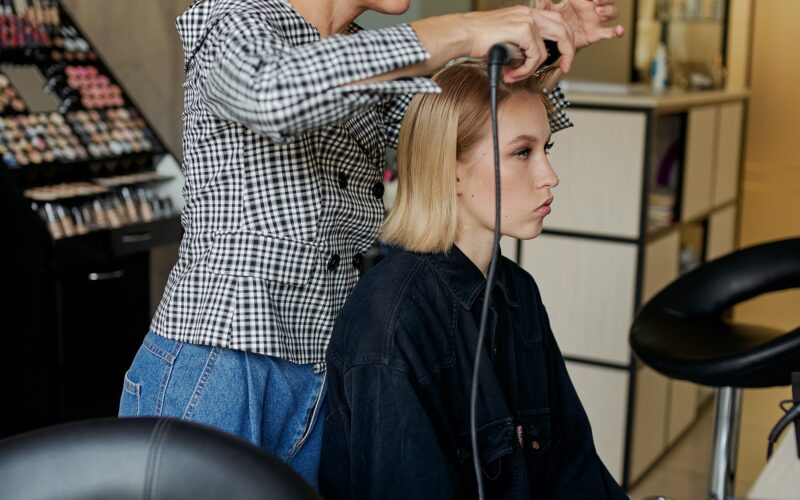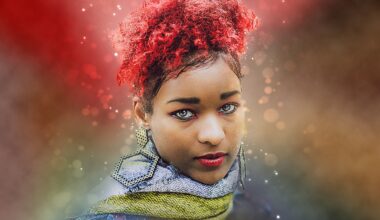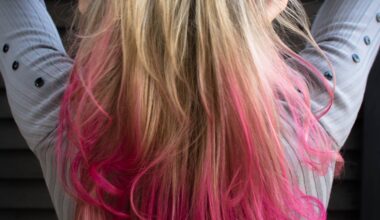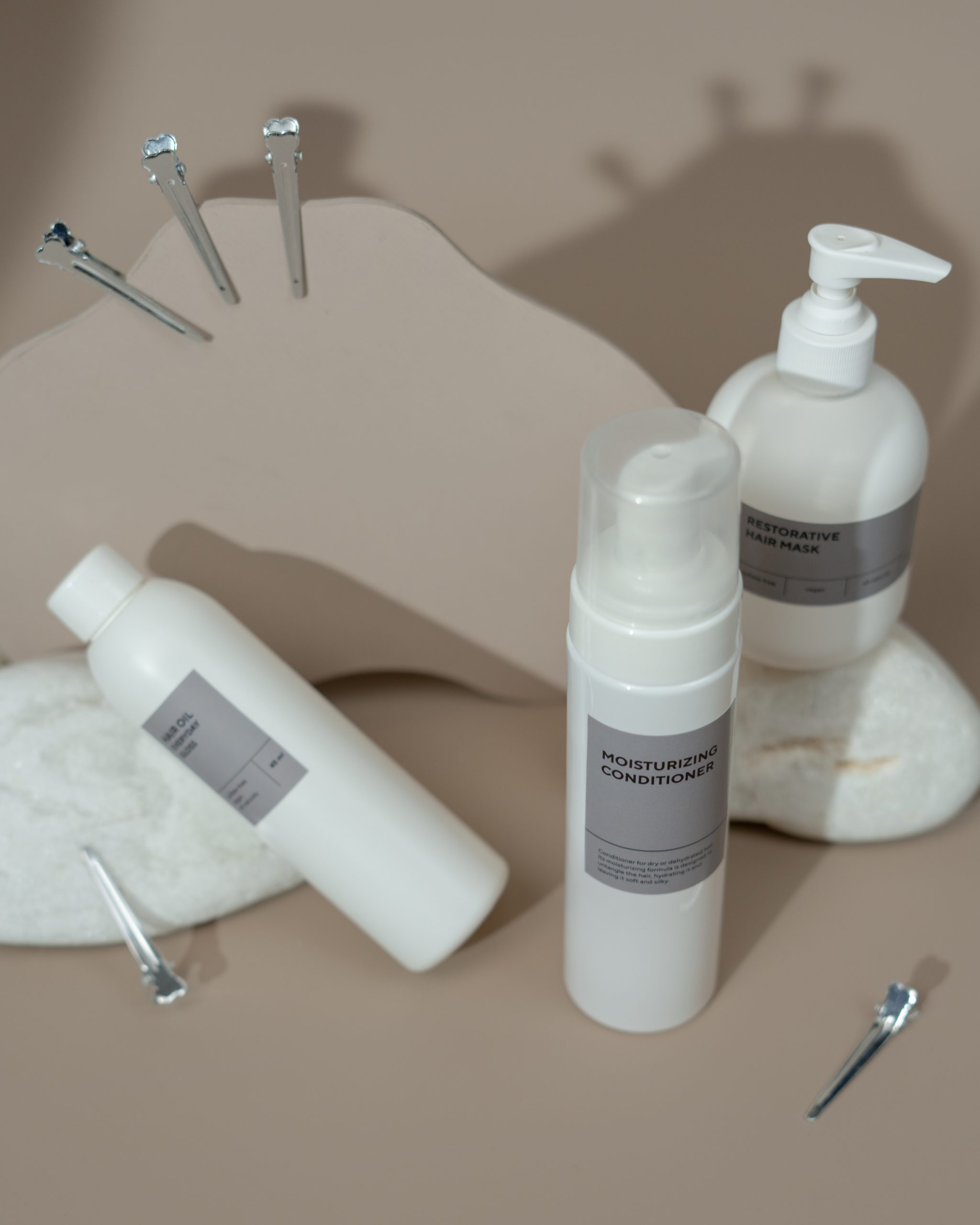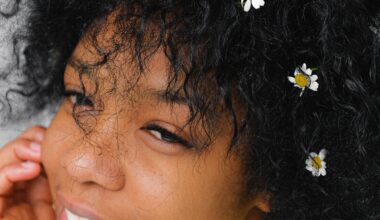Introduction
In the world of beauty and hairstyling, few transformations rival the allure of sleek, straight locks. The magic of hair straightening promises to tame unruly curls, reduce frizz, and bestow a polished, sophisticated appearance. However, this enchanting procedure isn’t without its mysteries and misconceptions. Is hair straightening truly a boon for your tresses, or does it come with hidden caveats? Are there natural alternatives that allow you to enjoy the best of both worlds—gorgeous straight hair without the potential harm of chemicals and heat? In this comprehensive guide, we’ll embark on a journey through the diverse landscape of hair straightening. We’ll explore the enticing benefits, uncover the potential drawbacks, and venture into the realm of natural alternatives, allowing you to make informed choices for your hair’s health and beauty.
Is Hair Straightening Good for Your Hair?
The allure of straight hair is undeniable. It can effortlessly transform your appearance, lending an air of elegance and sophistication. But beyond aesthetics, does hair straightening offer any genuine benefits for your locks?
Unlocking the Potential Benefits:
- Sleek Appearance: One of the immediate advantages of hair straightening is the sleek, polished look it imparts. Say goodbye to unruly curls and unmanageable frizz; instead, welcome smooth, straight strands.
Considering Different Hair Types: However, whether hair straightening is “good” for your hair depends on several factors, primarily your hair’s natural type and texture.
- Fine Hair: If you have fine, delicate hair, the heat and chemicals involved in straightening can potentially make it appear fuller and more voluminous.
- Thick or Coarse Hair: Those with thick or coarse hair may find that straightening simplifies the daily styling routine, making hair more manageable.
- Curly Hair: For individuals with natural curls, straightening can offer a refreshing change, allowing them to explore different styles.
The Balancing Act: It’s essential to strike a balance, though. Excessive and frequent straightening without proper care can lead to heat damage, dryness, and even hair breakage. So, while straightening can offer short-term benefits, it’s crucial to be mindful of your hair’s long-term health.
With these considerations in mind, you can make an informed decision about whether hair straightening aligns with your hair type and styling preferences.
Choosing the Right Hair Straightening Method
The world of hair straightening offers a dazzling array of methods, each with its unique set of benefits and drawbacks. Picking the right method hinges on several crucial factors: your hair type, desired results, and even your commitment level.
The Landscape of Hair Straightening Methods:
- Traditional Flat Irons: These trusty devices employ heated plates to straighten hair sections. They are quick and efficient, making them ideal for those seeking temporary results.
- Keratin Treatments: A semi-permanent method, keratin treatments infuse your hair with keratin protein. This reduces frizz and adds a lustrous shine. They are an excellent choice for individuals combating frizz or residing in humid climates.
- Japanese Straightening: This permanent technique chemically alters the hair’s structure for a pin-straight appearance. It offers long-lasting results but requires a significant commitment.
Navigating the Choices:
When selecting a hair straightening method, consider the following factors:
- Hair Health: Assess the current state of your hair. Healthy hair can withstand more intensive treatments, while damaged hair may require gentler options.
- Maintenance Level: Different methods demand varying levels of care and maintenance. Some might need touch-ups every few weeks, while others offer long-lasting results.
- Budget: Hair straightening methods come with different price tags. Factor in your budget when deciding on the right method.
By weighing these factors, you can navigate the labyrinth of hair straightening methods and select the one that aligns with your unique needs.
Why Hair Straightening Might Be Bad
As with any beauty procedure, hair straightening is not without its potential downsides. While it can provide you with the sleek, polished look you desire, it’s essential to be aware of the risks and drawbacks associated with this transformative process.
The Potential Drawbacks of Frequent Straightening:
- Heat Damage: Frequent use of heated styling tools can strip your hair of its natural oils, leading to dryness, brittleness, and even breakage.
- Brittle Hair: Over-straightening can make your hair weak and prone to snapping. It’s essential to strike a balance between achieving the desired look and preserving hair health.
- Altered Hair Structure: Some hair straightening methods can change your hair’s natural structure. While this may lead to temporary straightness, it can have unforeseen long-term effects.
Protecting Your Hair:
To minimize the potential harm associated with hair straightening, consider the following tips:
- Always use a heat protectant product before straightening your hair.
- Avoid excessive heat exposure and limit the use of heated styling tools.
- Implement a regular hair care routine that includes deep conditioning and moisturizing treatments to counteract dryness and damage.
By being aware of the potential drawbacks and taking proactive measures to protect your hair, you can enjoy the benefits of straight hair while preserving its health.
Hair Straightening vs. Hair Smoothing: Which Is Better?
In the realm of hair transformations, two popular options often steal the spotlight: hair straightening and hair smoothing. Both promise sleek, manageable hair, but they go about achieving it in slightly different ways. The choice between the two hinges on your hair type, desired results, and styling preferences.
Hair Straightening:
- Approach: As the name suggests, hair straightening aims to eliminate curls and waves, providing a sleek, pin-straight appearance.
- Results: Hair straightening yields a polished, elegant look, making it ideal for those who prefer a straight and classic style.
Hair Smoothing:
- Approach: Hair smoothing, on the other hand, focuses on taming frizz and providing shine without drastically altering your hair’s natural structure.
- Results: This technique offers a more ‘natural straight’ appearance, maintaining the integrity of your hair’s texture while controlling unruliness.
Choosing the Right Option:
Your choice between hair straightening and hair smoothing should align with the look you desire and the level of change you’re comfortable with. If you’re looking for a dramatic transformation and are willing to commit to the maintenance required, hair straightening might be your best bet. However, if you prefer a more natural appearance with improved manageability, hair smoothing could be the perfect choice.
Ultimately, the decision should reflect your personal style, hair type, and maintenance preferences.
Hair Straightening vs. Hair Relaxing: Understanding Permanent Solutions
While hair straightening and hair smoothing offer temporary solutions for achieving a sleek, manageable look, there are also permanent options available. Hair relaxing and Japanese straightening are two such methods, each with its own set of characteristics and considerations.
Hair Straightening vs. Hair Relaxing: A Comparison
Hair Straightening:
- Nature of Change: Hair straightening temporarily alters the structure of the hair, providing straightness for a limited duration.
- Maintenance: Maintenance involves regular touch-ups to preserve the straightened look.
- Ideal for: Those seeking a change without a long-term commitment and individuals who want to maintain some degree of natural curl or wave.
Hair Relaxing:
- Nature of Change: Hair relaxing is a permanent treatment that permanently changes the hair’s structure to straighten it.
- Maintenance: While it offers long-lasting results, hair relaxing requires less frequent touch-ups compared to traditional hair straightening methods.
- Ideal for: Individuals who desire a permanently straightened look and are ready to commit to a lasting transformation.
The Permanence Factor:
It’s crucial to understand that hair relaxing provides a permanent solution, making it a more significant commitment. On the other hand, traditional hair straightening methods offer flexibility as they allow you to return to your natural hair texture with time.
When deciding between the two, consider your willingness to commit to a long-term change and how much permanence you desire in your hairstyling journey.
Natural Alternatives to Hair Straightening
For those who prefer to avoid the use of chemicals and excessive heat on their hair, natural alternatives to hair straightening offer a welcome solution. These methods allow you to achieve a straighter look while maintaining the health and integrity of your hair.
Exploring Natural Straightening Techniques:
- Blow Drying with a Round Brush: Using a round brush while blow-drying your hair can help straighten it naturally. This method works well for those seeking temporary results without resorting to heat styling.
- Hair Rollers or Hair Wraps: Hair rollers or wraps can gently straighten hair when used regularly, providing a more relaxed, natural straight look over time.
- Braiding or Twisting: Braiding or twisting your hair and leaving it that way overnight can create loose waves that resemble natural straightness.
- Using Natural Oils: Some natural oils like argan oil can help with frizz control and provide a smoother appearance.
The Benefits of Going Natural:
- Less Damage: Natural methods are gentler on your hair and minimize the risk of damage associated with heat and chemicals.
- Temporary Styling: These techniques provide temporary results, allowing you to switch between straight and natural looks as desired.
- Enhanced Hair Health: Embracing your hair’s natural texture can promote overall hair health, as it reduces exposure to harsh treatments.
By exploring these natural alternatives, you can enjoy the benefits of straighter hair without compromising its well-being.
The Impact of Frequent Hair Straightening
Frequent hair straightening, whether through heat styling or chemical treatments, can have a significant impact on your hair’s health and appearance. Let’s delve into what happens when you make straightening a part of your daily routine and what unfolds when you decide to give your hair a break.
Straightening Your Hair Every Day:
- Potential Damage: Daily heat styling can lead to heat damage, making your hair appear dry, brittle, and prone to breakage.
- Weakening Hair: Over time, the strain of frequent straightening can weaken your hair’s structure, making it more susceptible to damage.
- Long-Term Consequences: Excessive heat and chemical use may alter your hair’s natural texture and structure, leading to unforeseen long-term effects.
What Happens When You Stop Straightening Your Hair:
- Natural Texture Returns: When you stop straightening your hair, it gradually regains its natural texture. This transition period may require some adjustments to your styling routine.
- Recovery and Repair: Giving your hair a break from straightening can allow it to recover and repair, regaining strength and vitality.
- Improved Hair Health: Embracing your hair’s natural texture can promote overall hair health, as it reduces exposure to frequent styling and potential damage.
It’s essential to strike a balance between achieving your desired look and preserving your hair’s health. Understanding the consequences of frequent straightening can help you make informed decisions about your hairstyling routine.
Hair Straightening and Hair Loss
Hair loss is a common concern among individuals considering hair straightening. It’s crucial to understand the relationship between the two and take measures to minimize the risk.
Exploring the Link:
- Heat Damage: Excessive heat styling, such as daily straightening, can lead to weakened hair that’s more prone to breakage. While this doesn’t directly cause permanent hair loss, it can result in reduced hair volume.
- Chemical Treatments: Certain chemical treatments, like hair relaxing, can alter the hair’s structure, potentially leading to hair thinning or breakage if not done correctly.
- Traction Alopecia: Tight hairstyles used in conjunction with straightening, such as tight ponytails or braids, can lead to a condition known as traction alopecia. This is characterized by hair loss in areas under tension.
Minimizing the Risk:
To minimize the risk of hair loss associated with hair straightening:
- Limit Frequency: Avoid daily straightening and give your hair regular breaks from heat styling.
- Use Heat Protectants: Always use heat protectant products to shield your hair from excessive heat damage.
- Professional Guidance: Seek professional guidance when considering chemical treatments, ensuring they are performed by experienced stylists who prioritize your hair’s health.
- Gentle Styling: Opt for gentler hairstyling techniques and avoid tight hairstyles that exert excessive tension on your hair follicles.
Understanding the potential risks and taking preventive measures can help you enjoy the benefits of hair straightening without compromising your hair’s health.
Conclusion: Making Informed Choices About Hair Straightening
As we conclude our journey through the world of hair straightening, it’s clear that this transformative process comes with a spectrum of benefits, drawbacks, and considerations. Achieving sleek, straight locks is undeniably appealing, but it’s essential to navigate this path with knowledge and care.
Key Takeaways:
- Benefits and Beauty: Hair straightening can provide you with a polished, sophisticated appearance and control over unruly hair.
- The Balancing Act: However, it’s crucial to balance the desire for straightness with the health of your hair. Excessive heat styling and chemical treatments can lead to damage and hair loss.
- Natural Alternatives: Natural alternatives offer the benefits of straight hair without the potential harm of chemicals and heat. Embracing your hair’s natural texture can promote overall hair health.
- Long-Term Commitment: Permanent solutions like hair relaxing require commitment, while temporary methods offer flexibility.
- Minimizing Risks: To minimize the risks associated with straightening, limit frequency, use protective products, seek professional guidance for chemical treatments, and avoid tight hairstyles that can lead to hair loss.
In the end, the choice to straighten your hair should align with your personal style, hair type, and maintenance preferences. By making informed decisions and prioritizing your hair’s health, you can enjoy the beauty of straight hair while ensuring its long-term vitality.
Additional Resources
To further assist you in your hair care journey, we’ve compiled a list of additional resources. These links will provide you with expert opinions, in-depth articles, and valuable insights into hair straightening, hair health, and styling alternatives:
- The Science Behind Hair Straightening
- Choosing the Right Hair Products for Your Hair Type
- Maintaining Healthy Hair: Tips and Tricks
- Exploring Natural Hair Care: Embrace Your Beautiful Texture
- Expert Advice: Common Hair Myths Debunked
Feel free to explore these resources to expand your knowledge and make well-informed decisions about your hair care routine. Your hair’s beauty and health are in your hands, and with the right information, you can confidently navigate the world of hairstyling.
Thank you for joining us on this journey through the intricacies of hair straightening. We wish you healthy, beautiful, and stylish hair every day.
If you have any more questions or topics you’d like to explore in the future, please don’t hesitate to reach out. We’re here to assist you on your quest for the perfect hair care routine.
